How Do You Solve a Problem Like a Giant Floating Bog?
The residents of Crow Wing County, Minnesota, have had enough of their floating island.
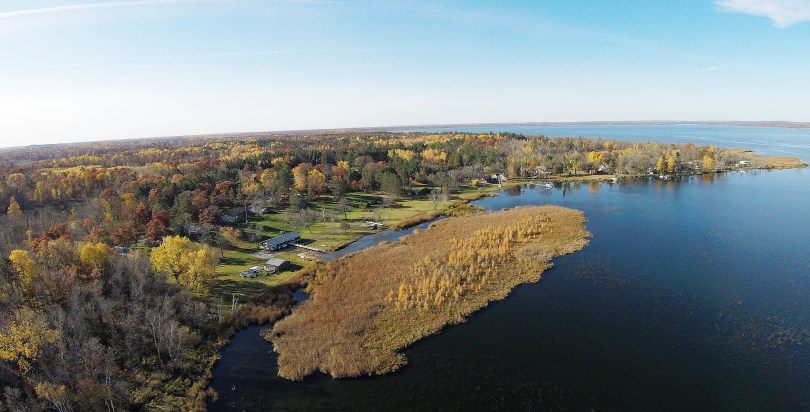
Floating islands have fascinated human beings for thousands of years. They appear in Greek, Native American, and Polynesian mythology, not to mention fantasy novels and dessert menus. But the residents of Crow Wing County, Minnesota have had about enough of their floating island.
“The wild beast of North Long Lake,” as one person described it to a local TV news crew, broke loose from the shoreline last fall. Heedless of property lines and proper decorum, it caromed around the lake for about three weeks before coming to rest, leaving behind crumpled docks and mangled boat lifts.
For now it is harmless, frozen in place. As the spring thaw approaches, the residents who live around North Long Lake are gearing up once more to deal with their beast. It won’t be easy. Disputes over who is responsible for it have challenged the bonds of community in this serene area just north of Brainerd, known for recreational fishing and boating.
Floating islands are common in Minnesota; it’s the size of this one that’s causing all the fuss. Sue Galatowitsch, a wetland ecologist at the University of Minnesota, says the island likely weighs at least 1,000 tons and could extend 30 feet below the water. Technically, it’s a floating bog. A natural assemblage of peat moss festooned with cattails and tamarack trees, the bog is more than four acres across—that’s about 64 tennis courts. “A bog that size,” Galatowitsch says, “can kind of do whatever it wants.”
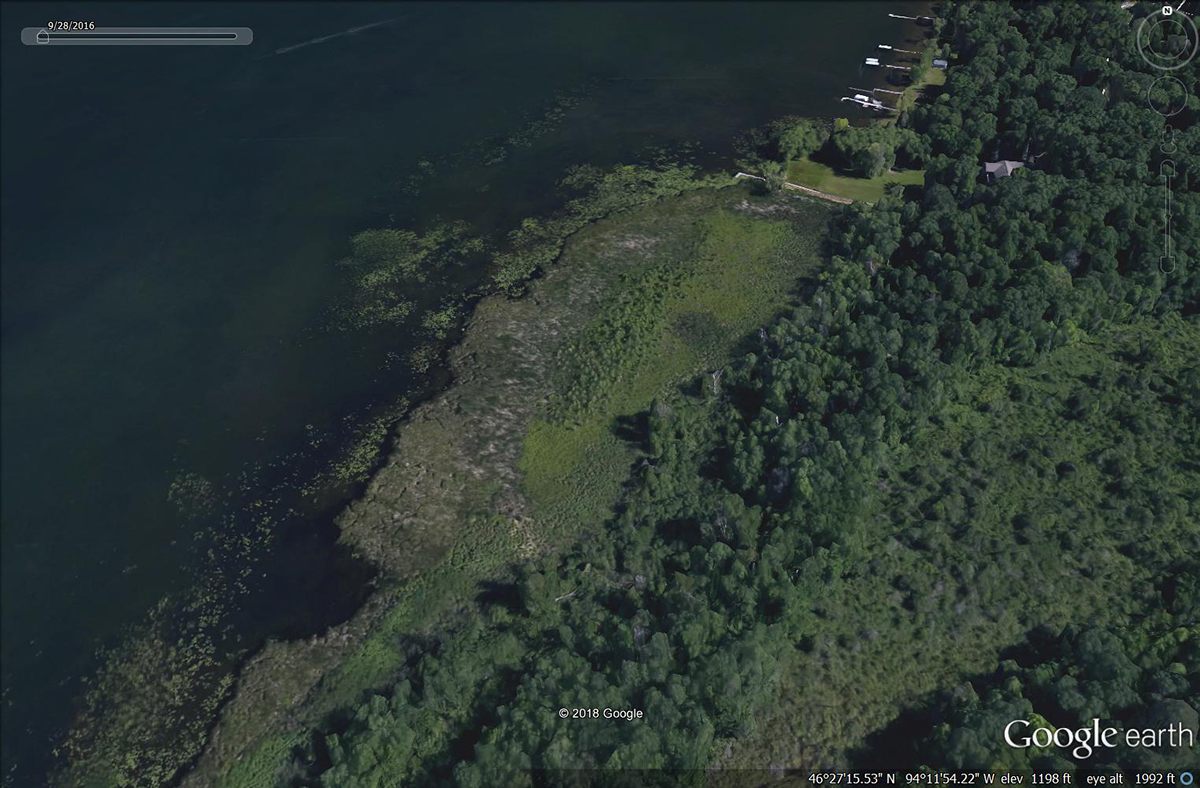
Most floating islands are bogs, and they are more common than one would think. “They seem like something that can’t exist, but they’re really all over,” says Chet Van Duzer, who wrote a 400-page bibliography on floating islands. They are found on six of the seven continents. People have grazed cattle on them, fished through them, farmed on them, even created religious ceremonies around them.
But in the Land of 10,000 Lakes, people mostly want them to go away. Minnesota residents regularly ask the state Department of Natural Resources for permission to move floating bogs away from their homes and stake them down elsewhere. “I deal with floating bog permits every year,” says Kevin Martini, an aquatic plant management specialist for the agency. In most cases, problem bogs are small enough to nudge to a new location with a boat or two. “They’re never this big,” he says.
Floating bogs float because the peaty soil that supports them releases gases as it decomposes. “Where they’re best developed, you’ve got 5,000 years of sphagnum peat accumulation,” Galatowitsch says. “Most of it’s dead. The only stuff that’s alive is the three or four inches at the top.” They expand outward from peat shelves that form along the shoreline. And when water levels are unusually high, as they were on North Long Lake last fall, floating bogs sometimes break free from their root tethers and go wandering.
The North Long Lake bog began its journey at a summer camp called Legionville. The camp, owned by the American Legion, trains children as volunteer crossing guards and helps them master other road safety skills, like exiting overturned school buses. For years, the bog bobbed inoffensively next to an unused stretch of lakeshore there. Then, one blustery October morning, it broke loose.
Bill Schmidt, president of the North Long Lake Association, remembers the phone call from a resident at the north end of the lake. “They said there was this huge chunk of land floating towards them,” he says. “And they were sitting there having coffee and it just kept coming. It destroyed their dock and boat lifts and they wanted to know what to do about it.”
At the whim of wind and wave, the bog meandered for weeks within a kidney-shaped bay at the north end of the lake, an area just over one square mile. In late October, it came to rest in the waters off Legionville’s swimming beach, about 400 yards from where it had started. Randy Tesdahl heads the American Legion in Minnesota. He was out of town when he got the call. “I said ‘Okay, we’ll deal with it in the spring,’” he recalls. “‘It’s a bog. How bad can it be?’”
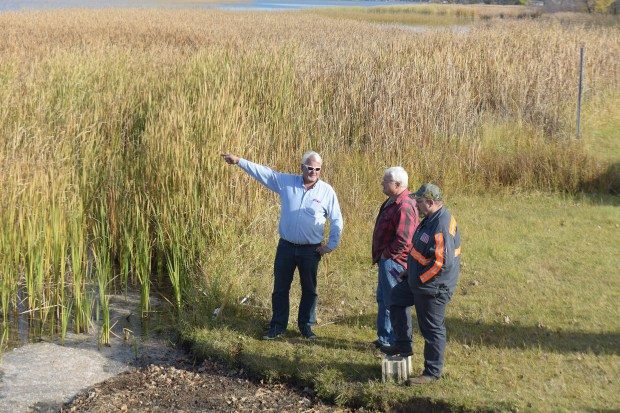
A bog, he’s since learned, can be pretty bad. After it landed at Legionville, the DNR gave the North Long Lake Association a permit to stake it there. The idea was to try and corral the bog near its place of origin while a plan took shape to move and anchor it permanently. The Lake Association planted wooden stakes, made of 10-foot-long two-by-fours, on three sides of the bog to keep it from heading back out into the lake. But they did so without the American Legion’s permission. Lake Association president Bill Schmidt says that’s because, at the time, the bog was several hundred feet offshore. (The wind has since blown it back, right in front of the swimming beach.) “It was not attached to shore so there would not be any reason to seek permission,” he says. Some Legionnaires felt otherwise.
“There was some anger, quite honestly, and some discontent,” says the American Legion’s Tesdahl. Summer camp manager Roy Kruger complained to a local newspaper that he was going to lose business because of the bog. “So the person who staked it there is the responsible party,” he said. “So they’re going to have to move it, [or] they’re gonna get sued.”
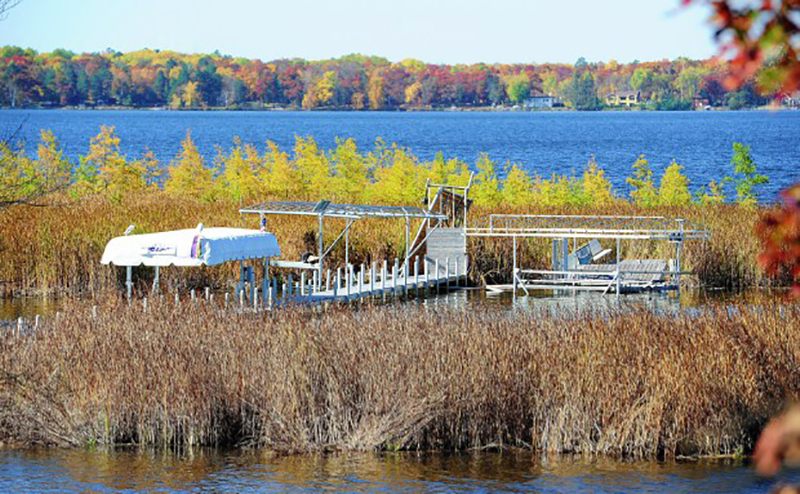
Meanwhile, other residents directed their ire towards the Department of Natural Resources. “I mean, this got political,” says Martini. Residents complained to their legislators that issuing permits wasn’t enough—that the DNR should get out there and move the bogs. “They were complaining that the DNR should take care of this,” Martini says. “We just say hey, it’s a public water. The bog is habitat. We’re fine with it being wherever it ends up.”
Winter deepened and tempers cooled. Tesdahl, Schmidt, and Martini talked things over. “I said, ‘We gotta turn this into lemonade,’” says Tesdahl. “‘Everybody do a little bit and we’ll get the thing moved and it will be a feel-good story.’” All three entities now claim a positive working relationship. The North Long Lake Association and the American Legion agreed to share the cost of dealing with the bog.
But early estimates were beyond either organization’s means. Destroying the bog, they learned, would cost as much as half a million dollars. Bids to move it came in around $100,000. So the interested parties, led by Tesdahl, decided they would take on the bog themselves. “My first question was ‘Can we blow it up?’” says Tesdahl. The DNR demurred. So the group has devised an elaborate plan to move it, as soon as the lake thaws.

A floating bog, they’ve learned, is a slippery adversary. It jiggles like a waterbed when you walk on it, and falling through is a danger. To move a bog, one needs to get a grip on it. Try and do so, and chunks break off like Jello. So Tesdahl and others are building a “necklace” out of logs and chains. According to Tesdahl, the log necklace will wrap around the bog, allowing tractors equipped with poles to push from the shore and boats in the lake to pull. The boats will rotate the bog 180 degrees, away from the swimming beach. Then the team will fix the bog in place. Chains will encircle the rootballs of fallen trees, snake across the bog on top of plywood planks, and hang off the end into the water, anchored by massive steel beams. Eventually, the team hopes, the bog will root itself once more and reattach to the shoreline.
Tesdahl estimates the operation will cost between $5,000 and $10,000. Taking advantage of an unusual product placement opportunity, the outboard motor company Evinrude has agreed to donate 20 boats, including a 24-foot barge, to the effort. Tesdahl is seeking donations for materials. Manpower, however, won’t be a problem. The American Legion in Minnesota has 73,000 members.
“You put a bunch of old veterans together, they can move a mountain,” Tesdahl says. Whether they can move a bog remains to be seen.


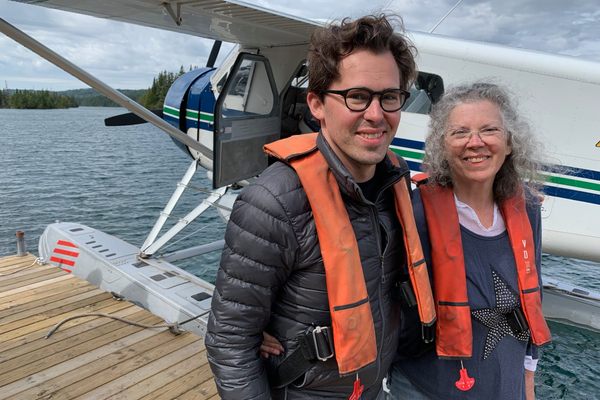
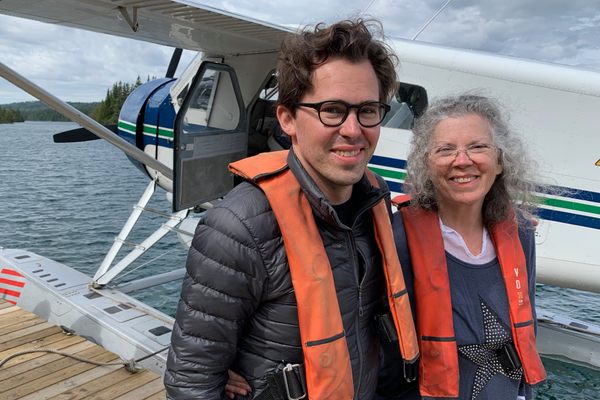









Follow us on Twitter to get the latest on the world's hidden wonders.
Like us on Facebook to get the latest on the world's hidden wonders.
Follow us on Twitter Like us on Facebook